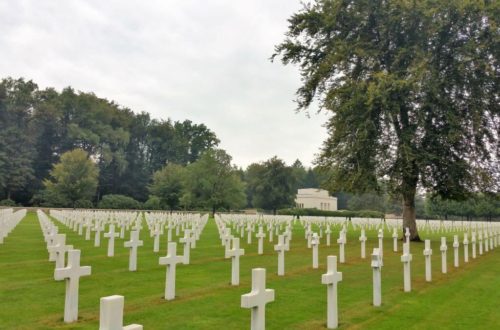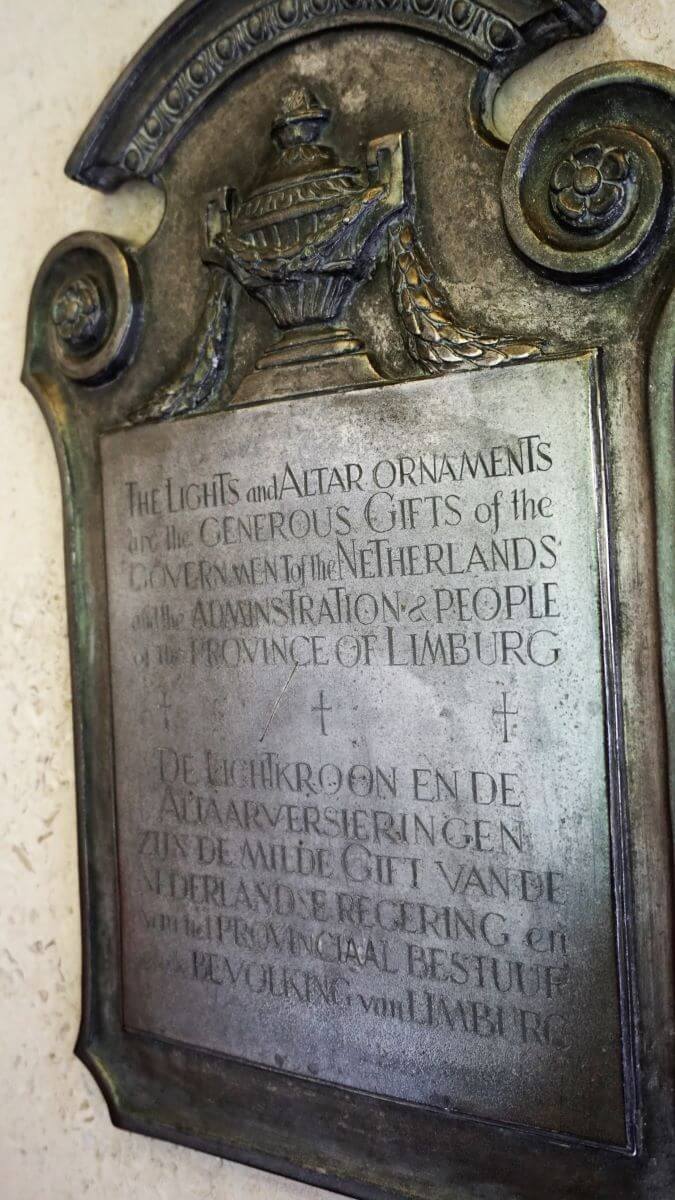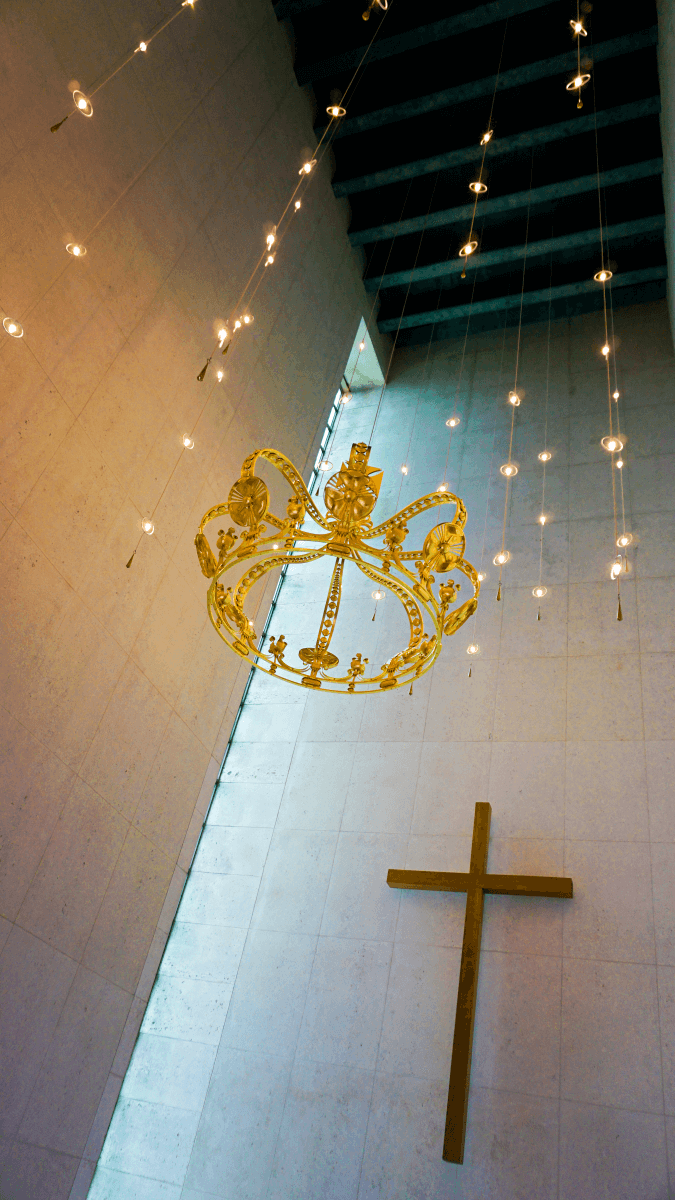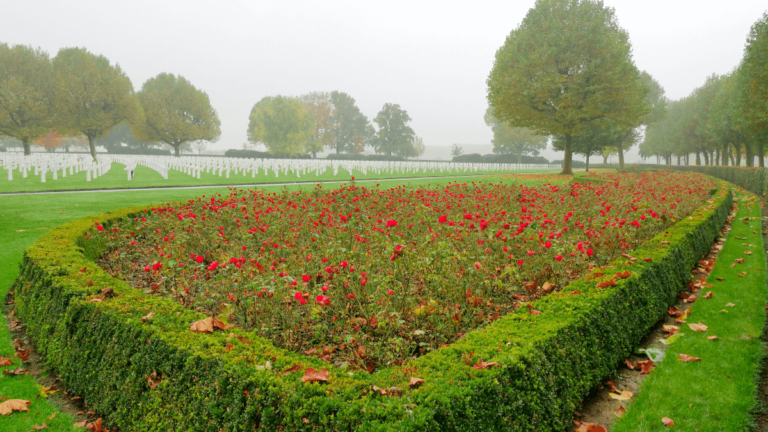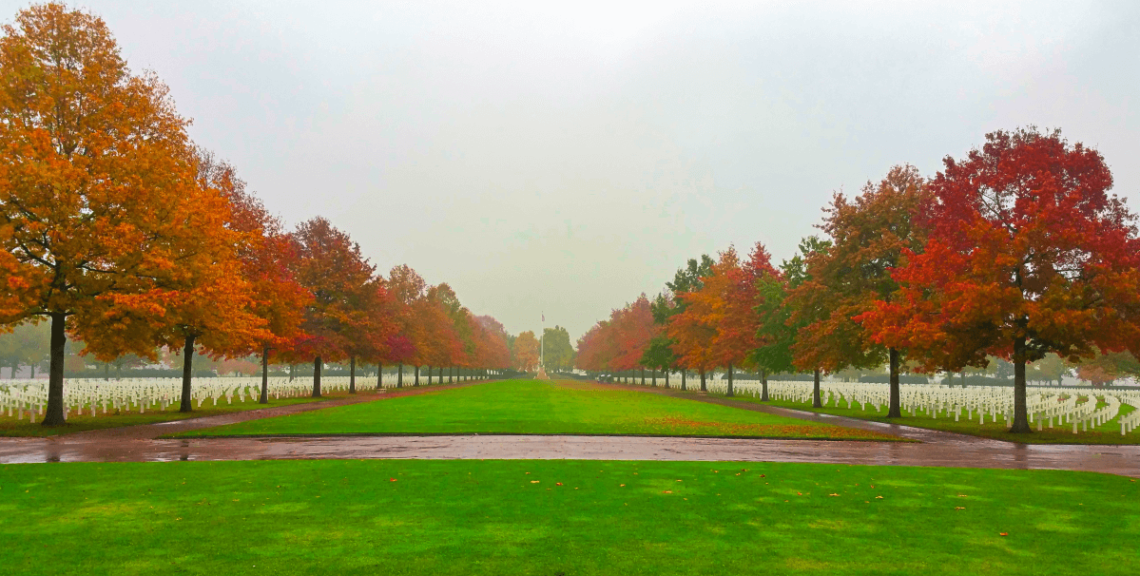
Netherlands American Cemetery and Memorial
“Here we and all who shall hereafter live in freedom will be reminded that to these men and their comrades we owe a debt to be paid with grateful remembrance of their sacrifice and with the high resolve that the cause for which they died shall live.” Dwight D. Eisenhower
Located in the southern tip of the Netherlands and nestled between Germany and Belgium you will find the Netherlands American Cemetery. This WWII cemetery, is located in the village of Margraten, about six miles east of Maastricht. Most of those memorialized here lost their lives in airborne and ground operations in late 1944 and 1945. The Netherlands American Cemetery is the only American military cemetery located in the Netherlands.
History
Just a few months after the landings at Normandy, the U.S First Army had marched its way across Belgium and Luxembourg and into the Netherlands near Maastricht. At the same time, the U.S Third Army was making its way across France while the British Second Army located farther north in Belgium, had already liberated Brussels and Antwerp. Advancements were being made quicker than expected but heavily defended cities by German troops, numerous canals and rivers would prove to be difficult. On September 14, 1944, Maastricht would be the first Dutch town to be liberated.
Progress would slow during the fall months. The enemy would launch its final counteroffensive of the war in Ardennes and Alsace on December 16, 1944. But by January 1945, the allied troops had retaken these areas and once again continued their push towards the Rhine River. Taking control of the Rhine River would be of major importance to the allies in order to continue their push into Germany, but this would prove to be difficult. The Germans would often destroy bridges in order to slow the allied forces advances. They had also destroyed the discharge valves of the dams on the Roer River, allowing large amounts of water to flow slowing progress for two weeks.
Finally, on March 24, 1945, allied troops crossed the Rhine and began their pursuit of the enemy throughout Germany and Austria. The enemy forces surrendered on May 8, 1945.
The Cemetery
On September 13, 1944, the U.S. 30th Infantry Division liberated the area where the cemetery now sits. On November 10, 1944, the U.S. Ninth Army established a battlefield cemetery. It was one of the first to intern American soldiers who fell on German soil. Most of those who rest here died defending the Netherlands (Holland).
The Netherlands American Cemetery is near the Roman built, Cologne-Boulogne highway. This road has been used throughout history by Caesar, Charles V, Napoleon, and Kaiser Wilhelm II. It was also used during the war by the Germans as they withdrew from Belgium and the Netherlands that they once occupied.
The cemetery sits on 65.5 acres in the Dutch countryside on land given to the U.S. by the government of the Netherlands. Resting here are 8, 301 military dead most of which lost their lives in both airborne and ground operation in eastern Holland. The completion of The Court of Honor and the Cemetery was in 1960 and dedicated on July 7th of that year.
Just like the other military cemeteries located throughout Europe, Netherlands American Cemetery consists of a Memorial, Chapel, and Graves area. Upon entering the cemetery, you first pass through the Court of Honor Memorial, continuing past the chapel and into the burial area.
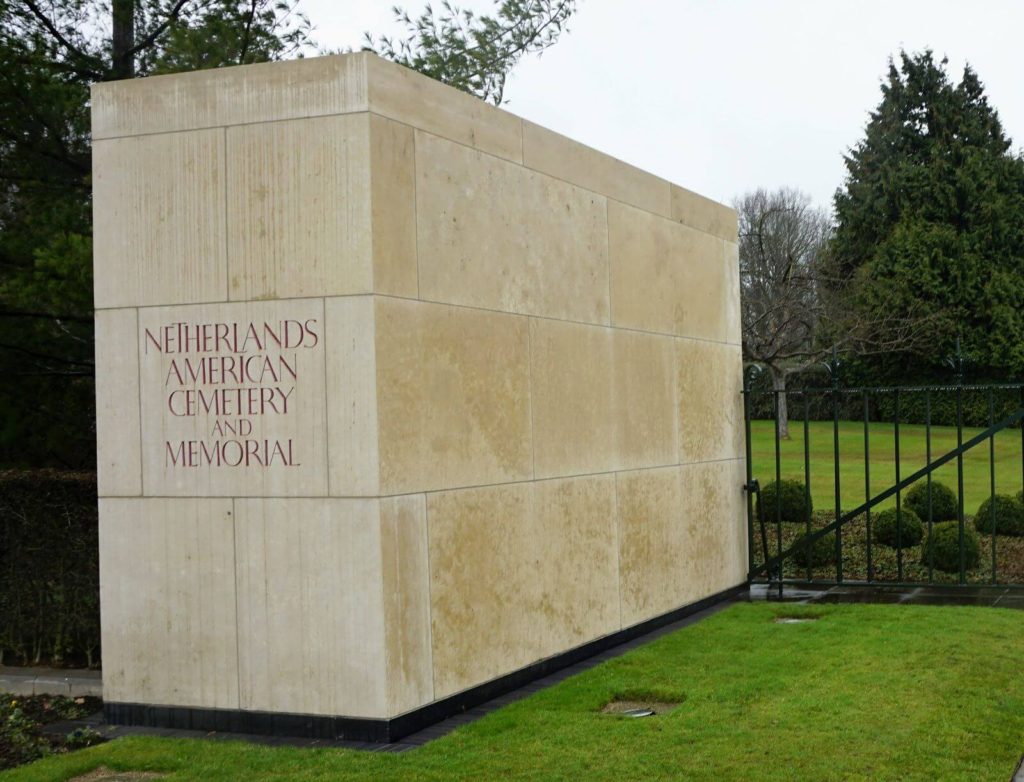
Memorial
At the entrance of the Memorial is the museum room. The interior walls of the museum are made of Roman Travertine. Here you will find three maps, created with mosaics. The large map shows the overall military operations in the area while the two smaller maps show airborne operations and the crossing of the Roer and Rhine Rivers.
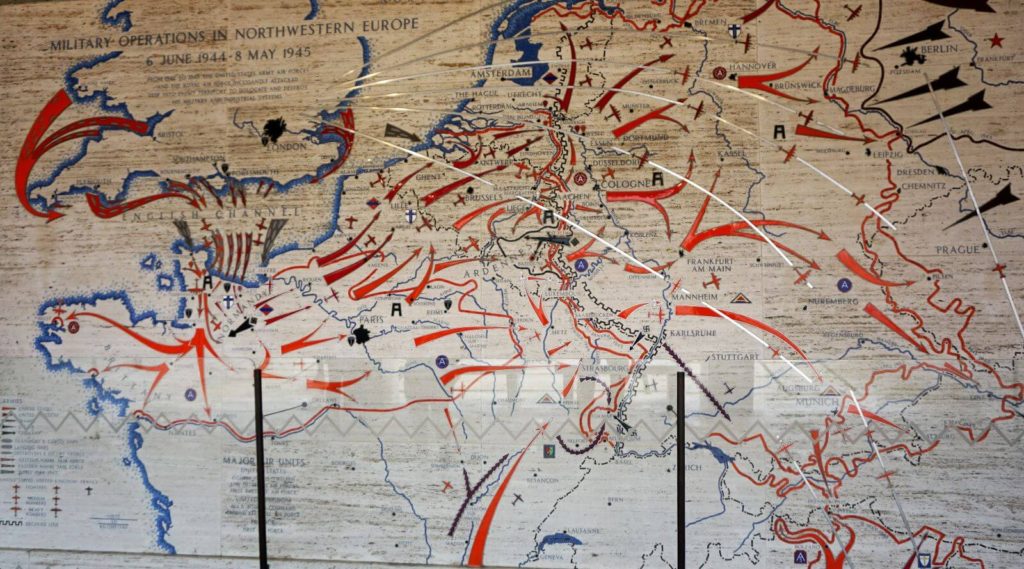
Court of Honor
Just past the museum, you enter the Court of Honor. Stone walls constructed of English Portland stone, flank the court to the left and right. Here you will find the names, rank, organization, and State of the 1,722 of those listed as Missing in Action. In front of each wall are small plots containing Japanese Cherry trees.
In the center of the Court of Honor is the “Mourning Woman” statue whose reflection and that of the tower behind her is seen in the reflecting pool.
The “Morning Woman” designed by Joseph Kiselewski of New York, was cast in Milano Italy. It is a representation of all women including mothers, daughters, wives, and sisters who stayed home waiting for their loved ones to return from war. Three doves fly over her shoulder representing peace while at her side is a new shoot emerges from a war destroyed tree. At the base, it says, “New life from war’s destruction proclaims man’s immortality and hope for peace.”
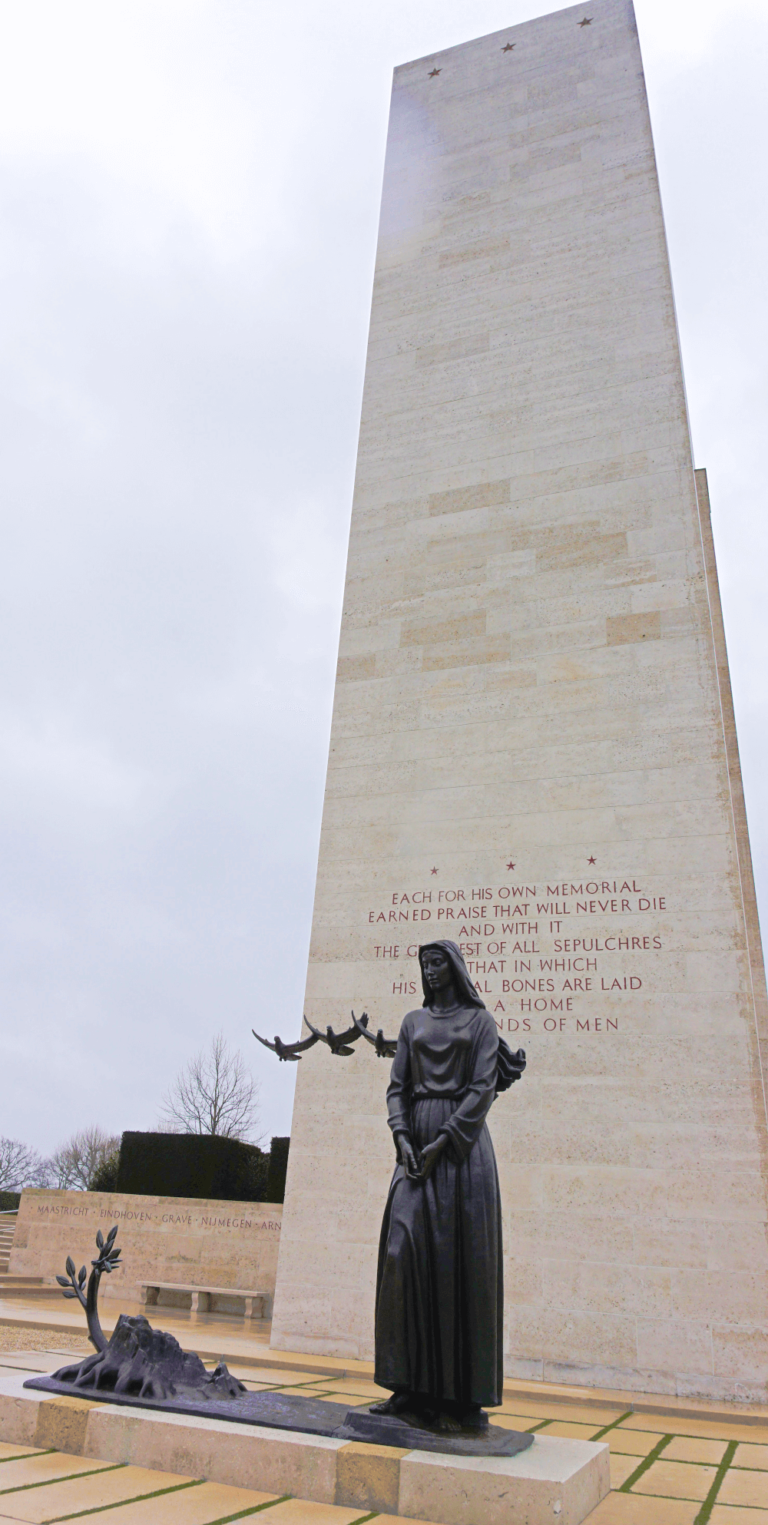
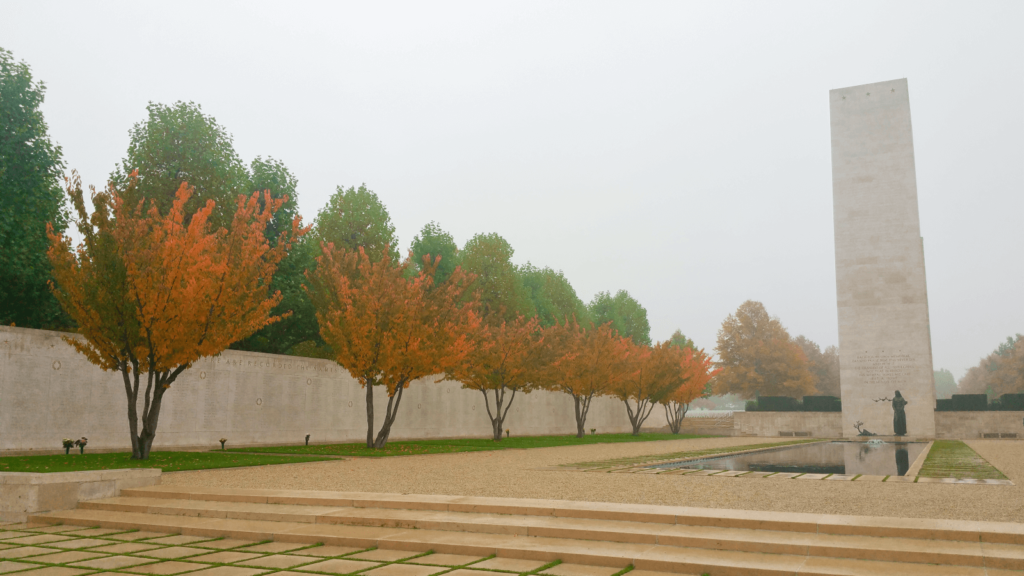
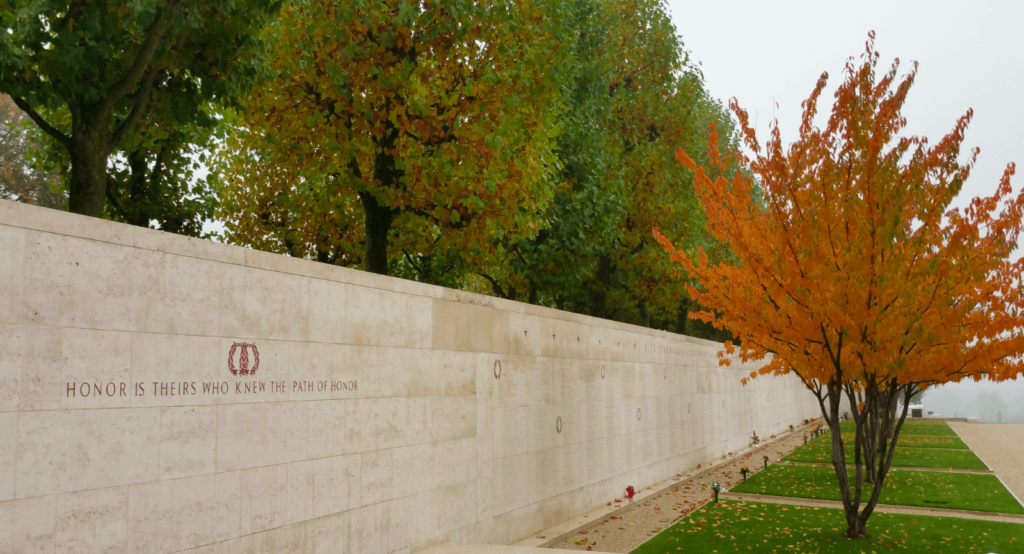
Chapel and Tower
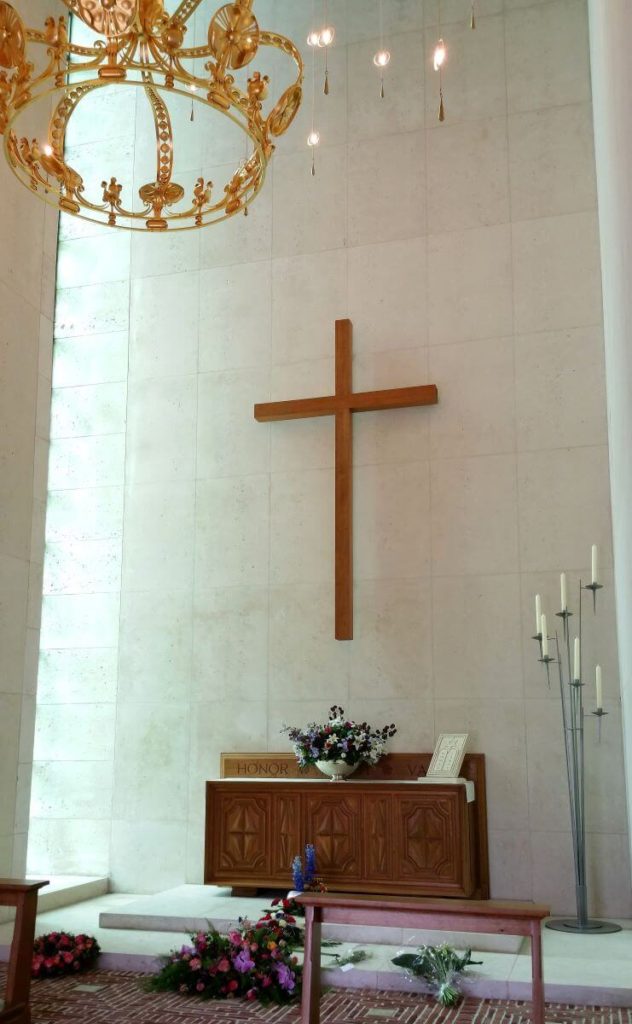
Located between the Court of Honor and the Graves area, are the Chapel and Tower. Made of English Portland stone, the tower stands at 101 feet high. Low walls that stretch out on the sides of the tower contain the names of major battles fought in the area such as Maastricht, Eindhoven, Rheinberg, Cologne, and Ruhr. At the top of the tower is a carillon, given to the cemetery by the American Veterans of World War II, Korea, and Vietnam in dedication to those from the U.S. who lost their lives.
The chapel, located inside the tower, is accessible from the graves area. The chapel doors, constructed of bronze display the Tree of Life on its surface. Above the doors, it states, “In Memory of the Valor and the Sacrifices which Hallow this Soil.”
Inside, the chapel is 52 feet high. Suspended from the ceiling is a lighting fixture, a gift from the Dutch people. It consists of a royal crown done in a gold finish, surrounded by strings of small lights that fall from the ceiling. On one wall is a grouping of three U.S. flags, a Christian flag, and a Jewish flag.
Opposite the entry doors is the altar, made of oak. On top of the altar, is a silver vase and to the side is a wrought iron candelabrum both of which are gifts from the Dutch government and its people. On top of the altar is a representation of the Ten Commandments and a cross hangs above.
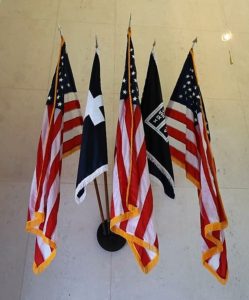
Graves Area
The graves area consists of two halves that are separated by a central mall that runs from the chapel to the flagstaff. On each side, the graves are further divided into 8 plots and are arranged in parallel arcs. There are 8,301 graves here and they are from every state in the Union, DC, England, Canada and Mexico. Among the graves are 106 unknowns. One headstone marks a common grave of two unknowns. There are 40 sets of brothers buried side by side.
Plantings include American tulip, rhododendron, hawthorn hedges, Polyantha Roses, oaks, and maple.
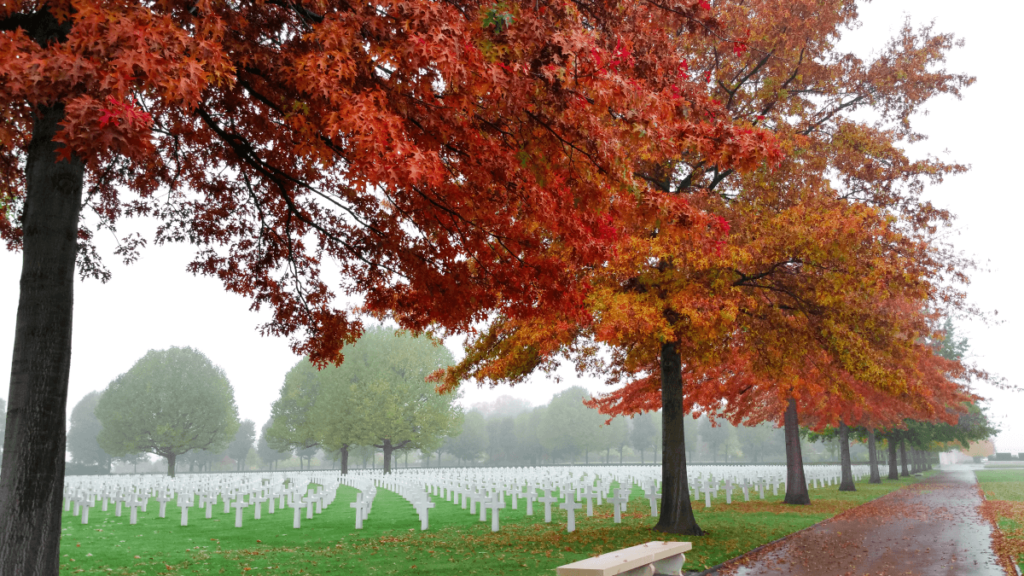
Netherlands American Cemetery is truly amazing and very humbling. As you walk the grounds and listen to the bells toll from the tower, you can’t help but remember the battles fought and lives lost upon the ground where you stand. The feeling is overwhelming. While your eyes may be full of tears, your heart will be full of pride.
Medal of Honor Recipients
Walter J. Will – First Lieutenant, U. S. Army, 18th Infantry Regiment, 1st Infantry Division
- Medal of Honor Citation
- Silver Star, Bronze Star with Oak Leaf Cluster and Purple Heart
Walter C. Wetzel – Private First Class, U.S. Army, 13th Infantry Regiment, 8th Infantry Division
- Medal of Honor Citation
- Purple Heart with Oak Leaf Cluster
Robert G. Cole – Lieutenant Colonel, U.S. Army, 502nd Parachute Infantry Regt, 101st Airborne Division
- Medal of Honor Citation
- Purple Heart and French Croix de Guerre with Palm
George Peterson – Staff Sergeant, U.S. Army, 18th Infantry Regiment, 1st Infantry Division
- Medal of Honor Citation
- Bronze Star with Oak Leaf Cluster, Purple Heart with 3 Oak Leaf Clusters
George J. Peters – Private, U.S. Army, 507th Parachute Infantry Regiment
- Medal of Honor Citation
- Purple Heart
Willy F. James, Jr. – Private First Class, U.S. Army, 413th Infantry Regiment, 104th Infantry Division
- Medal of Honor Citation
- Distinguished Service Cross, and Purple Heart
Things to see and do nearby
Cologne, Germany – 1.5 hours by car
- Visit the Cologne Cathedral
- Historic Old Town
- Take a day cruise on the Rhine River
- Drink a Kolsch
- Walk the City Center
- Take a cruise on the canals
- See some of the exceptional art
- Eat some chocolate
- Drink a beer
Keukenhof Gardens – 2.5 hours by car
- Located in Lisse, Netherlands, Keukenhof Gardens is one of the largest gardens in the world. With over 32 acres to explore you will see over 800 varieties of tulips and see more than 7 million bulbs will bloom.


You May Also Like
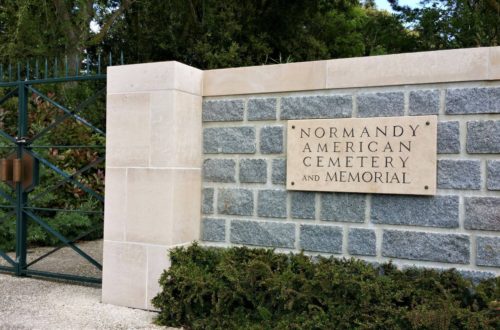
Normandy American Cemetery
May 20, 2019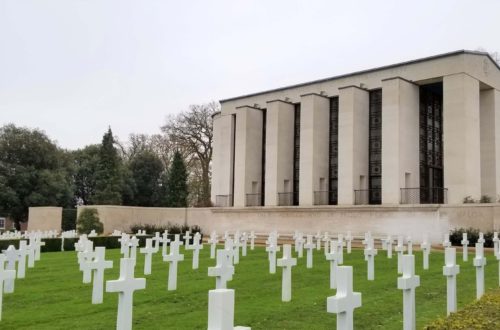
Cambridge American Cemetery
January 1, 2019